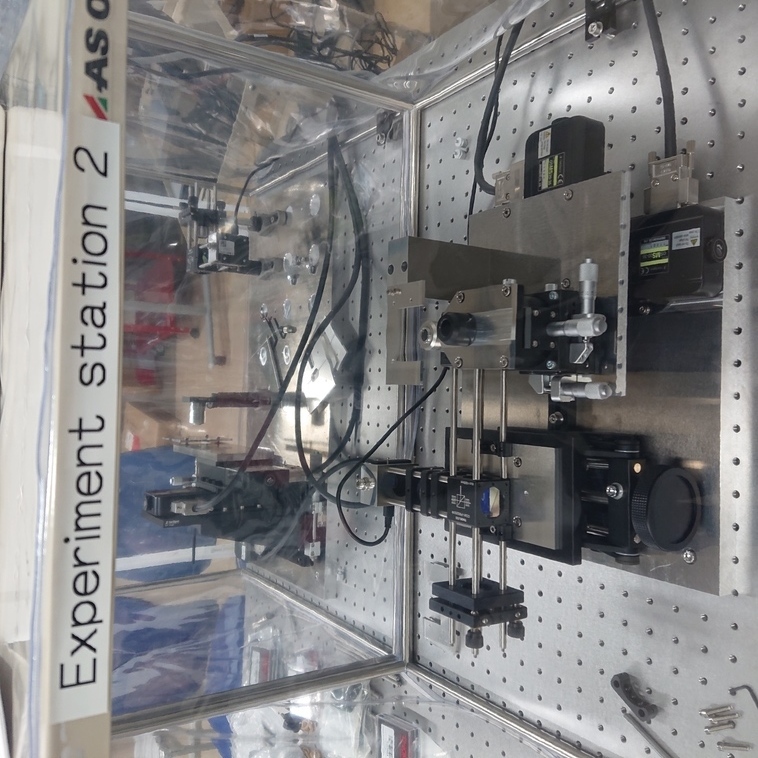Tokyo University of Science
Nano transport lab (Sadgrove lab)
Research outline
Background
Ever since Kepler postulated radiation pressure as the reason for comet tails facing away from the sun, the possibility of using light to manipulate the motional state of matter has been clear. In Japan, we see an early mention of light induced forces in the novel "Sanshiro" by Natsume Soseki, where the physics student Sohachi Nonomiya has developed an apparatus to test such effects. (To us here at TUS, Soseki is also beloved for having the protagonist of his most famous novel "Botchan" be a graduate of an earlier instantation of this University.)
Ashkin's experiments using a focused beam to trap particles transformed the study of optical forces from an intriguing topic in fundamental physics, into a burgeoning applied science, with three Nobel prizes, including Ashkin's own, tracing their lineage to his work.
One thing Ashkin's work didn't anticipate is how the confinement of light in dielectric structures would proceed, leading to massive reductions in the optical powers required to observe optical forces, as well as new effects associated with evanescent light at dielectric interfaces. Some of the earliest works in this direction are by Kawata and co-workers at Osaka University.
Among the many notable works combining nano-scale dielectric structures with optical forces in the atomic realm are those of the Kimble group at Caltech, and the Lukin group at Harvard. Closer to home, the Hakuta group at UEC in Tokyo developed tapered optical fibers into a tool for quantum optics including trapping and manipulation of atoms. Near the same time, the Rauschenbeutel group at Vienna (now Berlin) pursued a similar path, and the technique has now spread worldwide.
Our research
Coming from a background studying atomic transport using laser fields, it has been interesting to see themes such as directional transport repeated in nanophotonic settings in recent years. This reinforces the fact that nanophotonics brings new opportunities for transport experiments at the nanoscale.
At the nano-transport lab, we aim to study and control motion of nanoscale objects using light in nanoscale structures. In general, our interest is in expanding the techniques for control of motioin in nanoparticles, photons in nanostructures, and atoms near nanostructures. Our motivations range from the applied ("How can we transport bio-particles along fibers?") to the fundamental ("How can we measure this new type of optical force?"; "Can optical tweezer forces be significant in the one-photon limit?"). We divide our research into three principle parts as described below.
Research topics
Photons
We develop new methods to measure and control the coupling of photons to nanophotonic systems. Currently, we have a particular interest in directional photon coupling achieved at room temperature.
Nanoparticles
Nano-particles exist everywhere - they are even produced and ejected by our own cells. The ability to mainpulate them cheaply, easily and with low optical power can be expected to have real-world applications, but the use of nano-optics also raises fundamental issues, such as the existence of hitherto unobserved optical forces.
Atoms
Atoms are perfect systems for the study of light-matter interaction. When cooled, their wavefunctions can span 100s of nanometers, making them ideal for the study of quantum coherent effects in motional states.
Facilities
Nanofiber fabrication

We use a second generation, home-made tapering rig with a 99.9% pure hydrogen burner.
Custom microscopes

We use a range of custom microscopes in our experiments. The one pictured is for water-immersed microscopy.
Scanning electron microscope
We use a LEO SEM from Zeiss, collaborating with Prof. Homma of the physics department. This SEM has a number of capabilities over those found in standard SEMS, including simultaneous heat measurements, and EM with background gases.